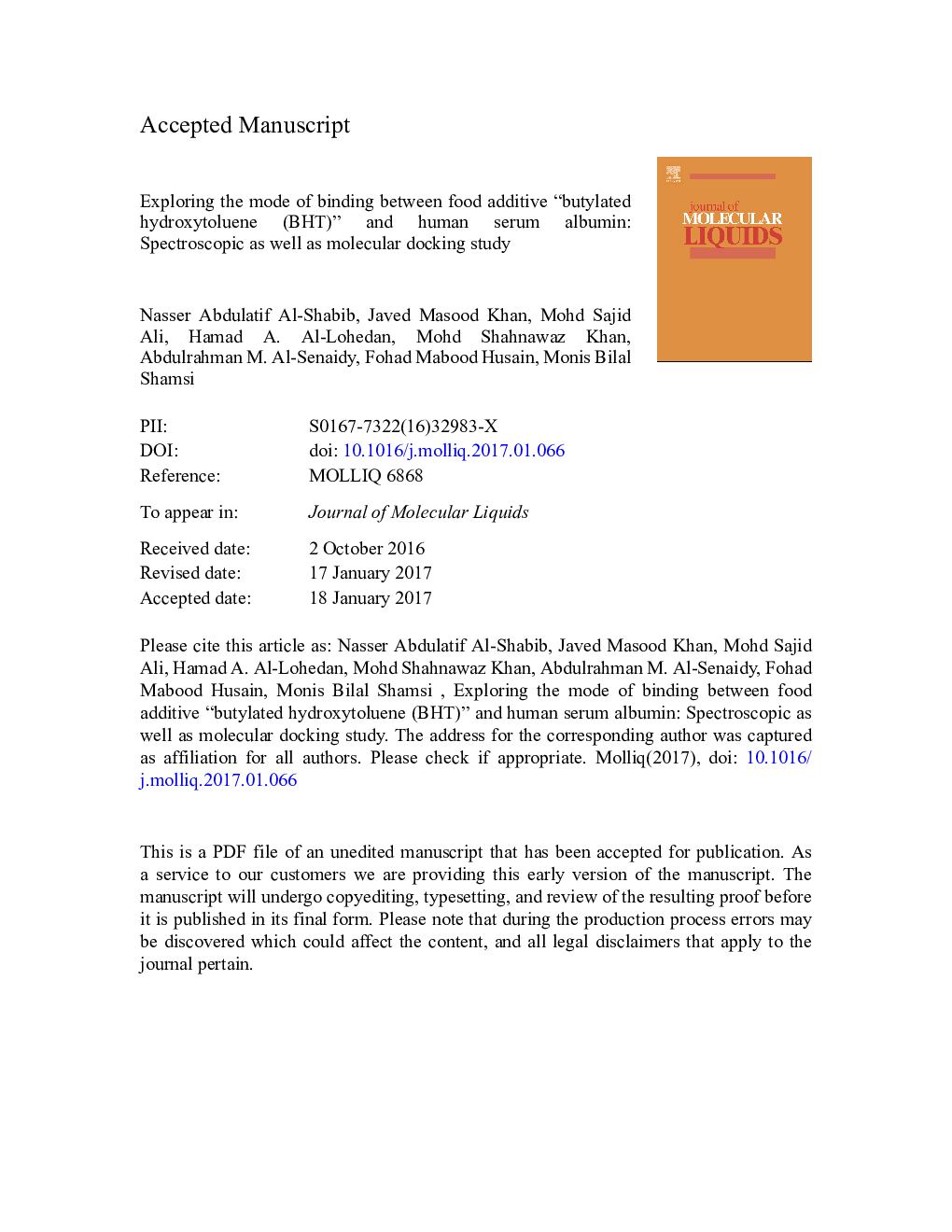| Article ID | Journal | Published Year | Pages | File Type |
|---|---|---|---|---|
| 5408897 | Journal of Molecular Liquids | 2017 | 37 Pages |
Abstract
Butylated hydroxytoluene (BHT) is a food additive and used as an antioxidant in food products. BHT also concerning several health risks such as cancer, asthma and behavioral disorder in children. Human serum albumin (HSA) is the main constituents of blood plasma and known as a carrier protein because it has a very strong ability to bind a variety of ligands. The binding of a drug or small molecules to serum albumin is a crucial determinant of its pharmacokinetic and pharmacodynamic profile. This study investigates the interaction between BHT and HSA at pH 7.4 using various spectroscopic techniques such as UV-visible absorption spectrophotometry, fluorescence quenching, circular dichroism (CD) and molecular docking. The interactions of BHT with human serum albumin in the UV-visible range of spectrum exhibits increased absorption peak at 280 nm that elevates with increasing concentrations of BHT. BHT was also found to quench the fluorescence of human serum albumin (HSA). However, the fluorescence quenching constant was decreased with increasing the temperature, indicating that the interaction between BHT and HSA takes place via the static quenching mechanism. The thermodynamic measurements indicated that both hydrogen and hydrophobic forces involved in the binding of BHT with HSA. Moreover, the negative â G value showed that the binding process was spontaneous. Far-UV CD data suggested the marginal conformational changes in HSA due to BHT interactions. Furthermore, molecular docking study suggested that BHT interacted with HSA at domain III via hydrophobic interaction. Conclusively, spectroscopies, as well as computational analysis extend our understanding of BHT interaction with serum albumin, which has far reaching applications in the food industry.
Related Topics
Physical Sciences and Engineering
Chemistry
Physical and Theoretical Chemistry
Authors
Nasser Abdulatif Al-Shabib, Javed Masood Khan, Mohd Sajid Ali, Hamad A. Al-Lohedan, Mohd Shahnawaz Khan, Abdulrahman M. Al-Senaidy, Fohad Mabood Husain, Monis Bilal Shamsi,
